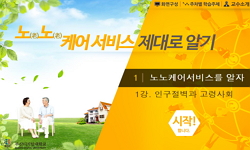Purpose: This study assessed a rehabilitation program for improving grip strength in the elderly and to inform the necessity of a program that allows self-rehabilitation through interest and enjoyment. The grip strength will be helpful in physical reh...
http://chineseinput.net/에서 pinyin(병음)방식으로 중국어를 변환할 수 있습니다.
변환된 중국어를 복사하여 사용하시면 됩니다.
- 中文 을 입력하시려면 zhongwen을 입력하시고 space를누르시면됩니다.
- 北京 을 입력하시려면 beijing을 입력하시고 space를 누르시면 됩니다.

Systematic Review of Rehabilitation Programs Affecting Grip Strength in the Elderly: Focusing on Domestic Literature
한글로보기https://www.riss.kr/link?id=A109591007
- 저자
- 발행기관
- 학술지명
- 권호사항
-
발행연도
2025
-
작성언어
Korean
- 주제어
-
등재정보
KCI등재
-
자료형태
학술저널
- 발행기관 URL
-
수록면
20-25(6쪽)
- DOI식별코드
- 제공처
-
0
상세조회 -
0
다운로드
부가정보
다국어 초록 (Multilingual Abstract)
Methods: This study was conducted from June 22 to July 29, 2024, and searched only KCI-registered journals and KCI-registered candidates for the past 10 years through RISS, KISS, the National Library of Korea, and the National Assembly Library. The study was conducted according to the PRISMA guidelines, and the main search terms were “elderly,” “grip strength,” “old age,” and “grip.” The literature was finally collected into eight volumes based on the exclusion criteria.
Results: Various exercise intervention programs (e.g., Tai Chi, aquatic exercise, elastic band, telephone coaching, gym ball, aerobic and anaerobic exercise, muscle strengthening flow chart, and recreation) were used, and the grip strength increased in all studies except for one volume where only the right hand increased without any change in the left hand. Most variables measured together (pain, fear of falling, balance ability, depression, flexibility, muscle mass, and bone density) increased, but the cognitive function and metabolic syndrome did not change.
Conclusion: Future studies should examine intervention methods tailored to the physical, psychological, and mental aspects of the elderly by taking advantage of the exercise program to improve grip strength so that they can enjoy their daily lives.
Purpose: This study assessed a rehabilitation program for improving grip strength in the elderly and to inform the necessity of a program that allows self-rehabilitation through interest and enjoyment. The grip strength will be helpful in physical rehabilitation for the elderly and provide the necessary data for developing intervention programs.
Methods: This study was conducted from June 22 to July 29, 2024, and searched only KCI-registered journals and KCI-registered candidates for the past 10 years through RISS, KISS, the National Library of Korea, and the National Assembly Library. The study was conducted according to the PRISMA guidelines, and the main search terms were “elderly,” “grip strength,” “old age,” and “grip.” The literature was finally collected into eight volumes based on the exclusion criteria.
Results: Various exercise intervention programs (e.g., Tai Chi, aquatic exercise, elastic band, telephone coaching, gym ball, aerobic and anaerobic exercise, muscle strengthening flow chart, and recreation) were used, and the grip strength increased in all studies except for one volume where only the right hand increased without any change in the left hand. Most variables measured together (pain, fear of falling, balance ability, depression, flexibility, muscle mass, and bone density) increased, but the cognitive function and metabolic syndrome did not change.
Conclusion: Future studies should examine intervention methods tailored to the physical, psychological, and mental aspects of the elderly by taking advantage of the exercise program to improve grip strength so that they can enjoy their daily lives.
동일학술지(권/호) 다른 논문
-
- 대한물리치료학회
- 김유영
- 2025
- KCI등재
-
- 대한물리치료학회
- 장정화
- 2025
- KCI등재
-
Effect of Immersive Virtual Reality Environments on Postural Stability in Healthy Young Subjects
- 대한물리치료학회
- 김주상
- 2025
- KCI등재
-
- 대한물리치료학회
- 전동천
- 2025
- KCI등재




 KISS
KISS






